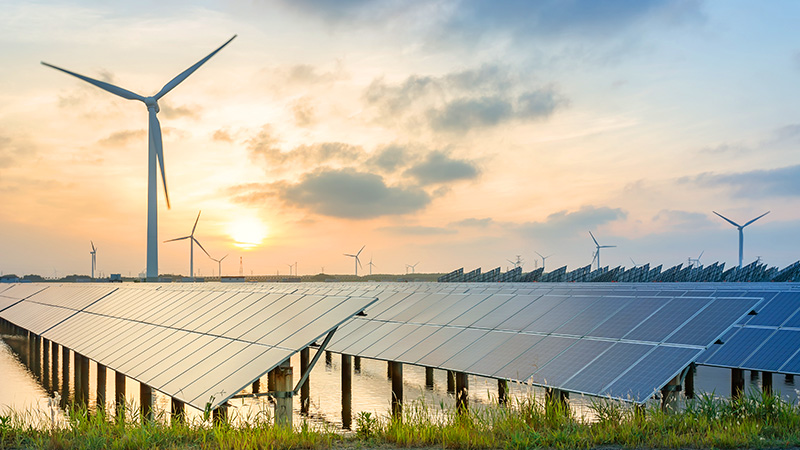Climate Change, AI and the Future of Precision Timekeeping

Climate change is impacting our world in unprecedented ways, from rising global temperatures and extreme weather to shifting ecosystems and disappearing habitats. While much attention is given to these visible effects, one lesser-known consequence of climate change is the impact on timekeeping. While temperature shifts disrupt circadian rhythms, the melting ice caps slow the spin of Earth’s liquid core and the rotation of the planet. The very mechanisms by which we measure time are being reshaped.
As climate change interferes with natural timekeeping, humanity is confronted with two major challenges: lessening its effects and refining AI technologies that require extraordinary timing precision. While immediate solutions to climate change are limited, advancing timing technologies is crucial for synchronizing AI-driven systems that help mitigate its impacts.
Natural Rhythms in Flux: Climate and Biological Timekeeping
A 2024 study by the National Scientific and Technical Research Council (reported by Popular Mechanics) found that trees, like all living things, have internal biological clocks that regulate functions such as carbon absorption and seasonal transitions. Rising global temperatures are throwing these rhythms off balance, threatening species like Nothofagus pumilio, which relies on colder climates to thrive.
Climate change is disrupting the natural rhythms of living organisms. This disruption in biological timekeeping mirrors the challenges faced in technological domains, where precise timing is essential for complex systems to function effectively.
The Impact of Melting Ice on Global Time Standards
A March 2024 study in Nature highlights how climate change is influencing the Earth’s rotational speed. Coordinated Universal Time (UTC), which traditionally accounts for variations in Earth’s rotation by adding leap seconds, may soon require an unprecedented "negative leap second." The rapid melting of Greenland and Antarctic ice sheets is slowing the planet’s rotation at a rate never seen, potentially necessitating a subtraction of time by 2029.
In parallel, ultra-precise time synchronization underpins computing systems, financial markets and communications networks. Since 1955, atomic clocks have provided an accurate timekeeping standard, yet UTC’s dependence on Earth's fluctuating rotation complicates this precision. While a subtraction of one second may seem minor, this adjustment can have far-reaching consequences through our technological systems. This highlights the critical role of precision timing in sophisticated technologies, such as AI, as climate change can impact timekeeping.
Precision Timing and AI-Driven Solutions for Climate Challenges
Climate scientists are leveraging advanced AI models to combat global warming, enhancing energy efficiency, forecasting extreme weather and minimizing greenhouse gas emissions. AI systems require unparalleled precision to operate effectively, from edge computing to massive datacenters. The timing infrastructure behind these systems must remain stable and reliable, especially as AI applications advance into critical areas like climate research and environmental monitoring.
Technologies such as Google’s DeepMind optimize renewable energy management, while machine learning enhances climate forecasting and disaster response. AI-driven smart grids improve energy distribution, while advanced models refine carbon capture techniques and sustainable agricultural practices.
Beyond mitigation, AI aids in climate research by enabling digital twin platforms like NVIDIA’s Earth-2, which simulates climate scenarios with unprecedented accuracy. These AI-driven solutions all rely on precision timing and synchronization.
The Path Forward: Merging AI And Precision Timing
As climate change continues to reshape natural and technological systems alike, ensuring accurate timekeeping throughout these changes remains a crucial challenge. Cutting-edge precision timing technologies based on microelectromechanical system (MEMS) are emerging as a robust alternative to traditional quartz-based electronic components in this new climate abnormal, surpassing quartz-based components in key metrics essential for timing accuracy. MEMS timing offers greater precision and resilience, making it an essential enabler of AI-driven advancements in both climate science and industry.
Beyond supporting modern communications networks, precision timing plays a vital role in advancing AI models. These models rely on processing vast datasets with unprecedented speed and accuracy, demanding next-generation timing solutions for reliable synchronization. With cutting-edge precision timing at the core of AI-driven climate models, we are poised to unlock groundbreaking solutions to address the world's most urgent environmental challenges.
Using AI supported by next-generation timing solutions, we can enhance our ability to predict, mitigate and adapt to climate change. Ensuring that AI operates on a foundation of accurate and stable timing infrastructure will not only drive technological innovation but also support environmental sustainability. By leveraging the power of AI, we can enhance our capability to understand, predict and lessen the impacts of climate change by developing solutions where precision timing, AI and environmental stewardship intersect for the greater good.
This article is based on The Synchronized Future: Precision Timing, AI And The Natural Clockwork Of Climate Change written by Markus Lutz, initially published by Forbes.